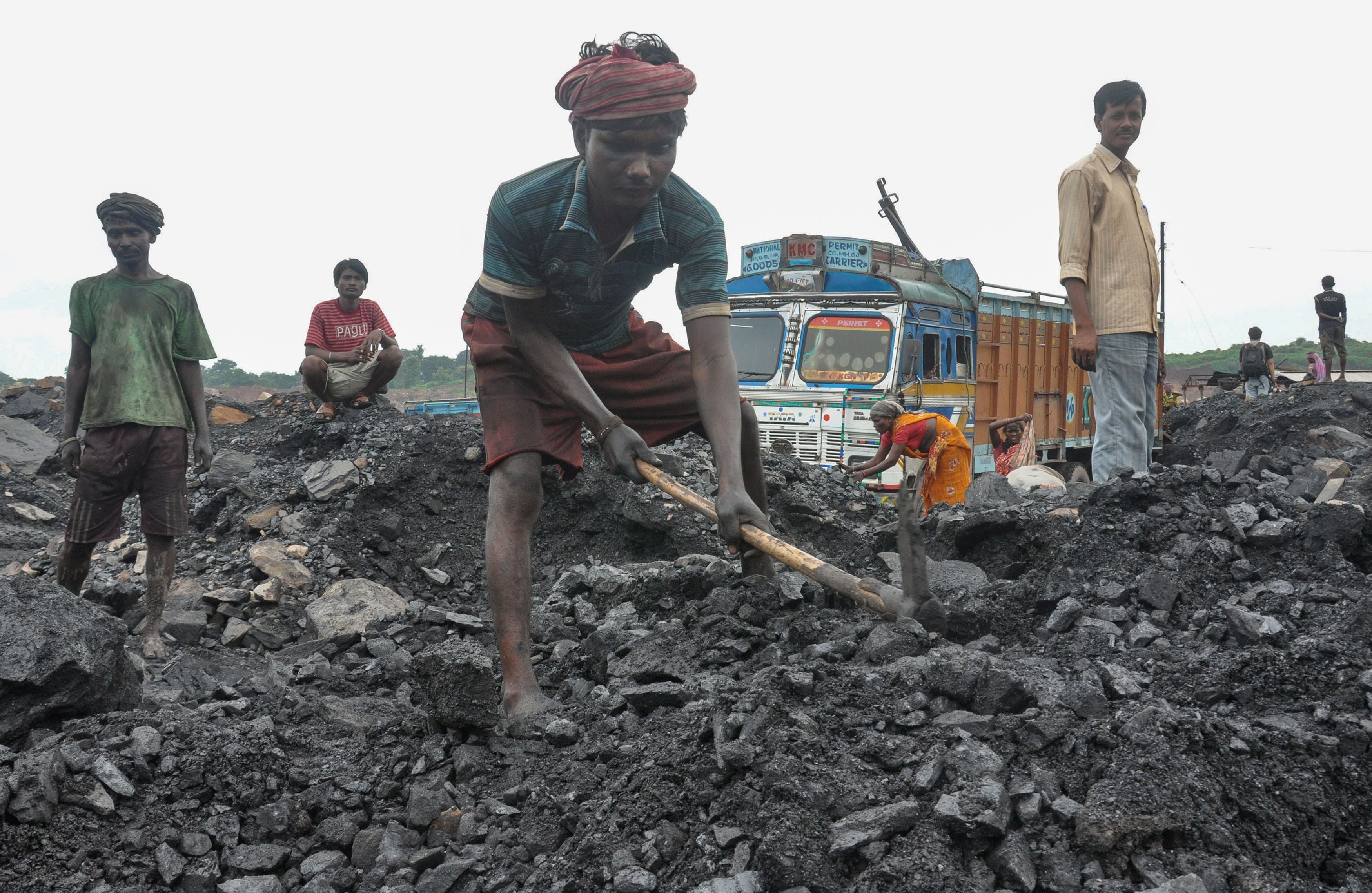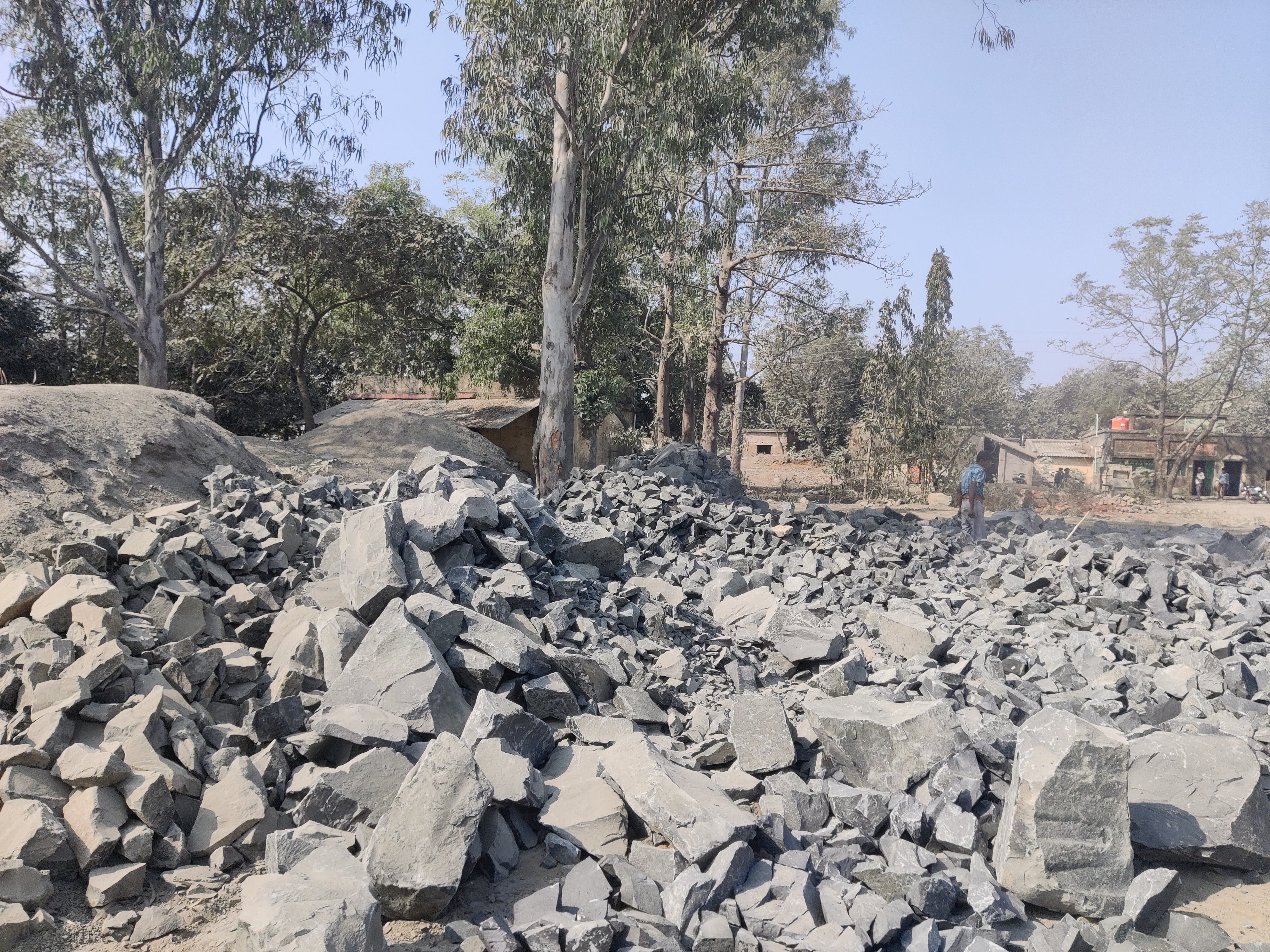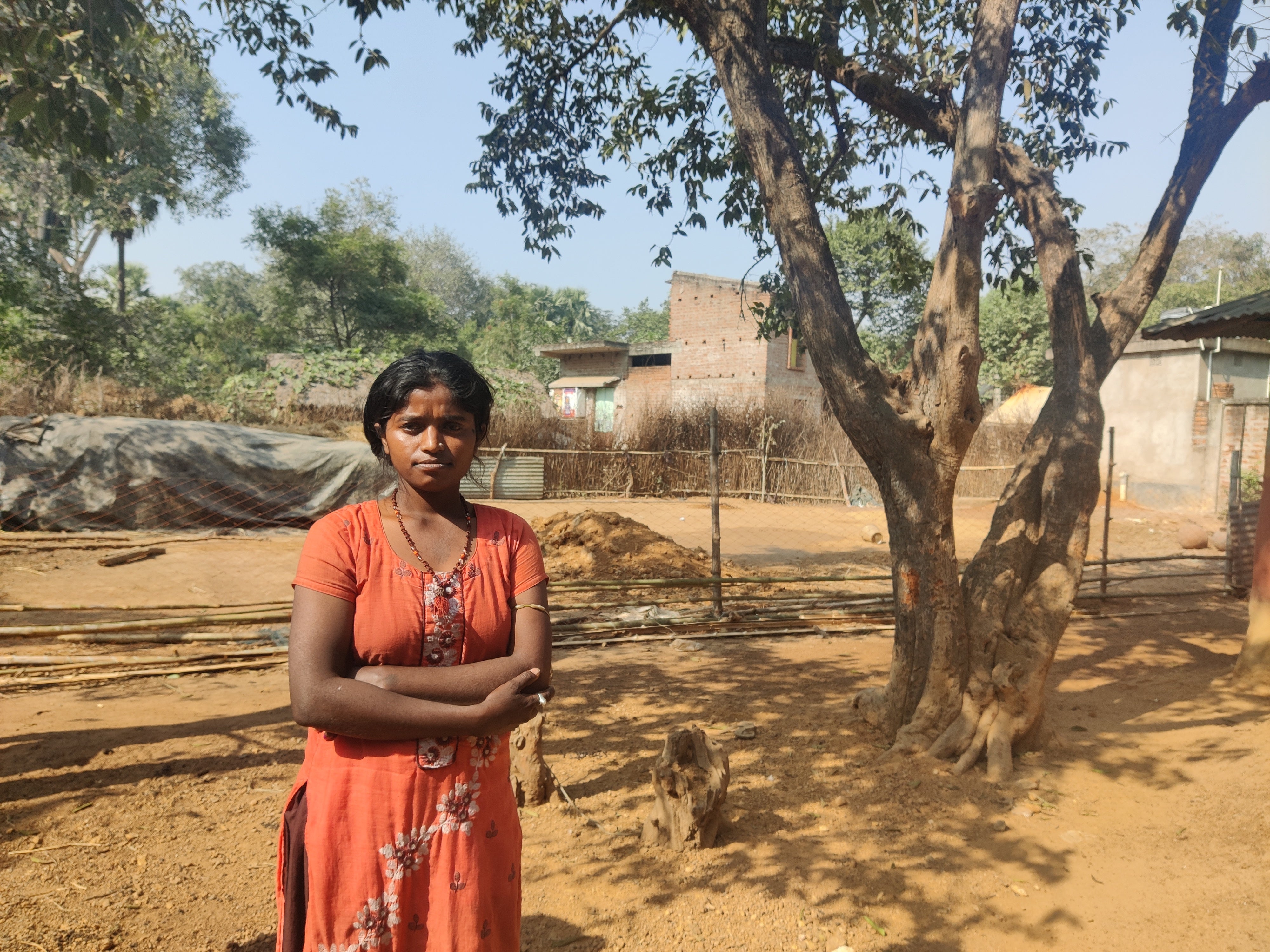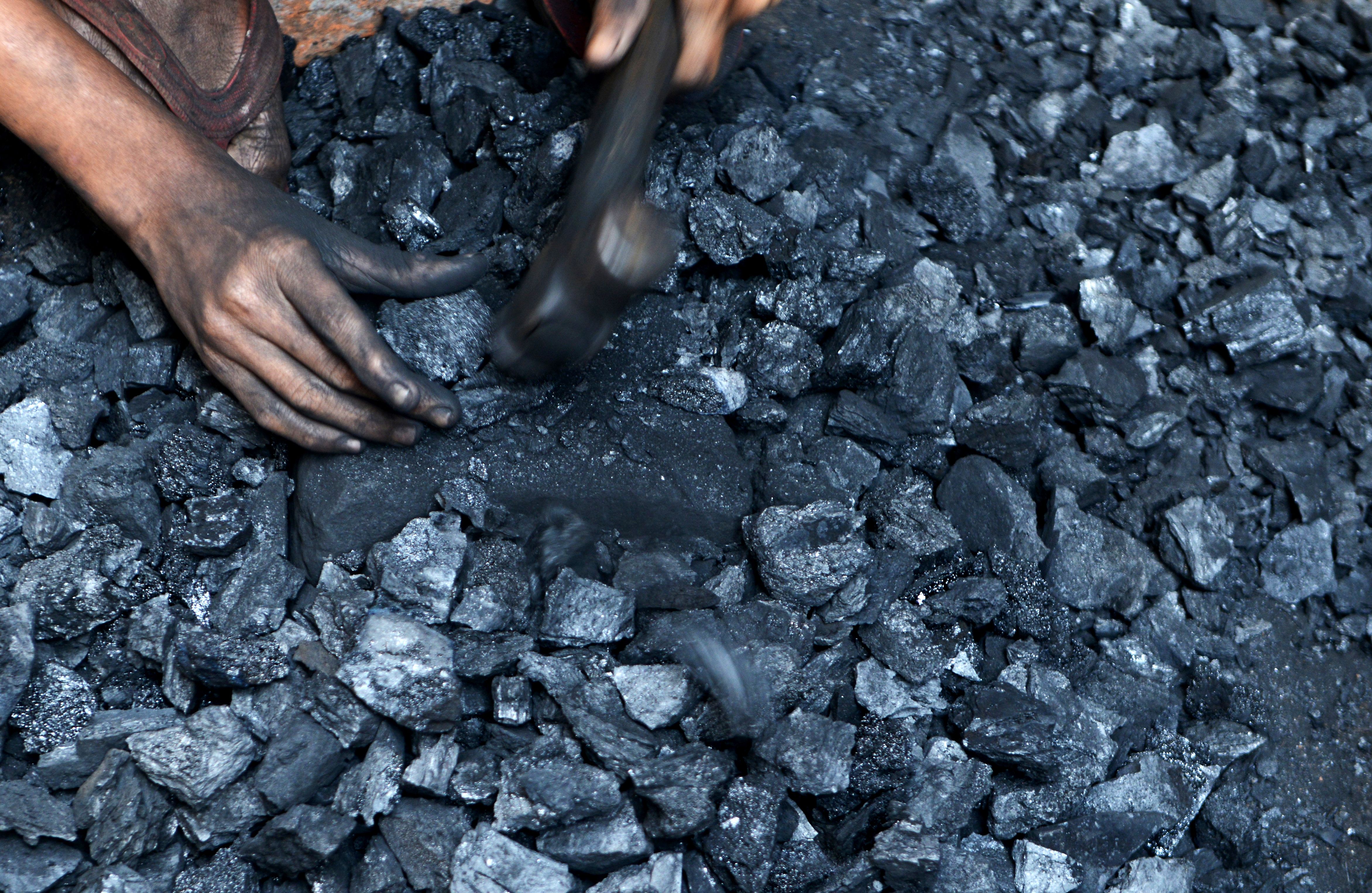Plans to create India’s largest coal mine face fierce local resistance: ‘People are terrified’
The homes of thousands of tribal people will be bulldozed for a huge coal project which, after progress on net-zero pledges at Cop26, has been met with global alarm. Alisha Rahaman Sarkar reports from West Bengal

A statue of tribal leaders Sidhu and Kanhu greets travellers at the entry point of Harinsingha village in West Bengal’s Birbhum district.
The nondescript Harinsingha and its neighbouring villages nestled between lofty sal trees are at the centre of the state government’s ambitious plan to expand India’s coal reserve, which will cost thousands of people their land.
West Bengal chief minister Mamata Banerjee in 2021 announced a 100bn rupees (around £1bn) compensation package for the people who would be asked to leave their houses and land for the Deocha-Pachami coal mine project – almost a third of its total estimated budget of 350bn rupees (£3.5bn).
The project is expected to create the country’s largest coal mine and produce supplies of coal for the next 100 years, the chief minister said.
India’s central government handed over the management of the coal reserves, estimated to be the second-largest in the world with an estimated 1.19 billion tonnes, to Ms Banerjee’s state government in 2018. “One hundred thousand jobs will be created, which will solve the problem of unemployment,” she claimed at the time.
Ms Banerjee, who charted her political career and rose to power by protesting against the former left-wing government’s land acquisitions for a car factory, stressed that her Trinamool Congress (TMC) government would not use force to displace villagers.
“We will create a model for India to execute large projects like the Deocha-Pachami coal block. This shall be done in phases and with full public support by adopting best mining practices in a time-bound manner,” she wrote on Twitter.
The mining project covers an area of about 12.28 sq km (approximately 3,400 acres) and is made of two blocks – Deocha-Pachami and the smaller Dewanganj-Harinsingha coal block (approximately 2.5 sq km of the total). The government owns 1,000 acres of land, of which some 300 acres is forest.
Spread across 12 villages over the Mohammad Bazar community development block and adjoining forest areas, the project puts more than 21,000 mostly tribal people at risk of being moved.
The government has already started the groundwork for land acquisitions in the Dewanganj-Harinsingha block, raising concerns among residents who face an uncertain future.

In Harinsingha, village head Joseph Marandi, a man in his mid-twenties, asserts that all the residents would collectively take a decision if they would want to hand over their land to the government.
“We have had multiple meetings with the district magistrate and other government officials. We have stated our demands and, if they can commit to it, then the village will take a decision. Whatever we decide, the entire village will do it collectively,” Mr Marandi tells The Independent.
Under the revised rehabilitation package announced in February, the state government is offering “double its market value along with 100 per cent solatium (compensation) as land cost” at 1.3m rupees (£13,000) per bigha (a measurement equivalent to about 0.6 acres).
It raised the house-building compensation to 700,000 rupees (£7,000), enough to build each displaced family a house of 700 sq ft. Under the terms of the offer, one person from each land-losing family would be appointed into the Bengal police force as a junior constable, a much-sought-after stable government job, and those with higher educational qualifications would be given a better post in the force.
Those currently working in stone crusher units at the site will get a one-off compensation payment of 50,000 rupees (£500) plus 10,000 rupees (£100) every month for a year. Agricultural workers will get 50,000 rupees (£500) in a one-time payment and 500 days of work under the Mahatma Gandhi National Rural Employment Guarantee Act (MGNREGA).
However, for 34-year-old Rana Murmu, who works at the nearby quarry, says these promises are not enough. Given the arid conditions, and low water retention capacity of the soil, most villagers take to quarries to earn a livelihood.
“Our forefathers have grown up in this house. How can we blindly trust anyone and leave our house and land? And they are offering only one government job. What will my wife do?” he asks.
In the neighbouring village of Dewanganj, there is more resentment towards the government. Chuttur Tutu, a frail man in his late fifties, cultivates mustard on rented land for a few months and crushes stones for 200-300 rupees (£2-3) a day. He says he is unlikely to receive any compensation given he is not a land-owner – and just one secure job won’t be enough to feed his family of 14.
Sumita Tudu, a member of the local panchayat (village council), says the villagers have rejected the initial proposal and the government has been asked to revise its offer. “We are waiting for what the authorities will do with our demands. The thought of losing everything at the drop of a hat is scary,” she says. “How can they assume we would be ready to relocate in an instant?”

Apart from local resistance, the project has been facing international criticism, with the UK and Germany raising concerns amid the global effort to transition away from fossil fuels.
The announcement of the project was made on the heels of the Cop26 climate summit in Glasgow, where the US and the European Union pledged to cut their emissions to net zero by 2050. India, one of the highest consumers of coal, announced its goal to achieve carbon neutrality by 2070.
“We read over the last few weeks about Bengal’s plans to develop what is believed to be the world’s second-largest coal mine, which makes [us] slightly uncomfortable. It was something we did not really discuss in Cop26,” Nick Low, British deputy high commissioner in Kolkata, told Indian newspaper The Telegraph. Manfred Auster, the German counsel general, shared similar concerns.
Consumption of coal, which accounts for 70 per cent of electricity generation in India, is likely to increase at an average rate of 3.9 per cent to 1.18 billion tonnes in 2024, according to an International Energy Agency report. While it would be impossible to wean India off coal overnight, the utilisation of vast new reserves inevitably raises concerns about the larger global aim to cut emissions.
Sandeep Pai, senior associate at the Energy Security and Climate Change Program, tells The Independent that the fact India is still a developing country provides “some justification” for going ahead with the project, adding: “Millions of Indians live in electricity poverty. India wants to provide that to its citizens, hence, given future demand, the governments are living in a coal vortex.”
At the same time, Pai says, “India has a very ambitious energy renewal programme and is doubling down on fossil fuels. So to reduce the emissions the government can use the carbon capture technology.”
While there are real issues and real lives at stake at Deocha-Pachami, the mining project has also been seized upon by the West Bengal opposition parties and turned into a hotbed for political sledging. A number of senior opposition figures have travelled to join the locals in their protests, and the state government has more than once responded by throttling demonstrations using brute police force.
On 21 February nine activists, including the prominent left-wing economist Prasenjit Bose, were arrested by the local police for taking part in a protest meeting. Earlier, a group of local leaders were booked by the police for “unlawful assembly”. Police have at times resorted to baton-charging protesters, prompting a group of women armed with sickles, bows and arrows to strike up a demonstration against police brutality.

Bikash Ranjan Bhattacharya, leader of the Communist Party of India (Marxist) and a member of the upper house of the Indian parliament, has been a frequent visitor to the coal block.
Addressing the locals, he announced in December that if police use force to evict you, “we’ll legally break the police’s hands”. “You keep your sticks ready for the appropriate use," he thundered.
Speaking to The Independent, he says: “We can’t sit here and watch the government blatantly violate the environment. They are snatching land for the indigenous people to make money. The government is offering such a small amount, what will they do? These forests are everything for the tribals, how can they watch everything burn down?”
“People are terrified,” asserts Rabin Soren, one of the most prominent tribal leaders in the region, who has been mediating between the government and the locals.
“I am not rejecting the project, but many people don’t have proper land records – how will they get compensation? And in our families, if one brother gets that police job, what about the others? We have cultural and religious links with our villages. It is difficult to move to some colony overnight,” he says.
Soren says the villagers were unhappy with the package and have asked for 1.5m rupees (approximately £15,000) per bigha and to increase the number of jobs. Even though the official map includes 12 villages, the entire project would affect at least 18 villages in the area, he said.
He believes the process to acquire land will “go on for a long time”, while being certain that the chief minister won’t be able to see coal being mined due to the thick layer of hard basaltic rocks and topsoil, the reason for the large number of quarries in the region.
The reserve has a valuable cap of basaltic rocks of around 135 metres, which was added to the government’s compensation package.
To pacify the protesters, officials said the government would organise training camps on motor mechanisms, welding, handling small equipment and heavy vehicle driving.
Birbhum’s district magistrate Bidhan Ray says as many as 1,600 families have so far consented to the government’s offer and the authorities have started identifying houses for moving.
Even this claim is refuted by locals, however, who say officials are spreading misinformation to encourage more people to surrender their land in exchange for an uncertain future.






Join our commenting forum
Join thought-provoking conversations, follow other Independent readers and see their replies
0Comments